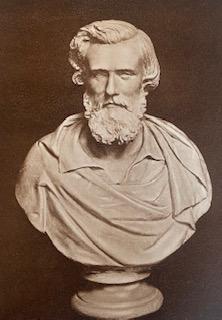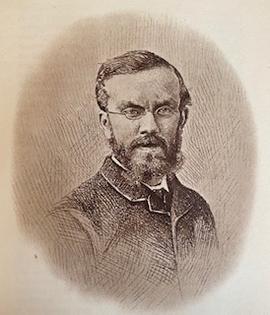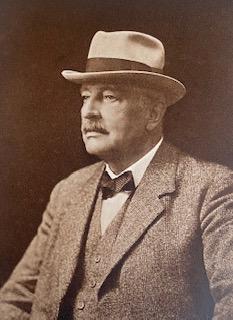Anatomist at Zoological Society of London
Dr William Charles Osman-Hill was a British anatomist, primatologist and an authority on primate anatomy during the 20th century. He wrote an eight volume series called 'Primates: Comparative Anatomy and Taxonomy', which covered all living and extinct species known at the time in full detail and contained illustrations created by his wife, Yvonne.
He was educated at King Edward VI Camp Hill School for Boys in Birmingham, and later obtained his degrees from the University of Birmingham. He obtained his primary medical degrees in 1924, and the same year took on the role of lecturer in zoology. He earned his MD with honours in 1925. He also earned his Ch.B while in medical school.
Upon graduation, Osman-Hill continued his role as a lecturer at the University of Birmingham under an apprenticeship until 1930, but teaching anatomy instead of zoology. In 1930 he moved to Sri Lanka to become both Chair of Anatomy and Professor of Anatomy at the Ceylon Medical College. His position allowed him to pursue anthropological studies of the indigenous Veddah people and comparative anatomy of primates. During this time, he began developing a private menagerie of exotic and native species. Osman-Hill held this position in Sri Lanka for 14 years, returning to the United Kingdom after being appointed as Reader in Anthropology at the University of Edinburgh in 1945. Upon his departure from Sri Lanka, his menagerie was divided between London Zoo and the National Zoological Gardens of Sri Lanka.
In 1950 he became Prosector at the Zoological Society of London and remained there for twelve years. He left London Zoo in 1962.
Between 1957 and 1958, Osman Hill acted as a visiting scholas at Emory University in Atlanta, Georgia. Later in 1958, primatologist Jane Goodall studied primate behaviour under him. In 1962, he was hired as the assistant director of the Yerkes National Primate Center in Atlanta.
The Royal Society of Edinburgh honoured him as a fellow in 1955, and for his contributions to science awarded him both its Gold Medal and the Macdougal-Brisbane Prize. Upon his retiring from YNPRC in 1969, the Royal College of Surgeons of England made him a Hunterian Trustee.
Prosector at the Zoological Society of London 1865-1870
Alfred Henry Garrod was born in London in 1846. He was the eldest child of Sir Alfred Barring Garrod, an eminent physician of the time. He studied medicine at Kings College London and was elected to St John's College, Cambridge in 1870. He started work as the prosector/anatomist at ZSL in 1871 and held this position until his death in 1879. He was especially interested in the anatomy of birds.
William Alexander Forbes was an English zoologist. He was the son of James Staats Forbes. He studied natural sciences at St John's College, Cambridge, and later taught at Rhodes College.
In 1879 he was appointed prosector to the Zoological Society of London. Forbes lectured on comparative anatomy at Charing Cross Hospital Medical School. As an anatomist he wrote papers on the muscular and voice organs of birds.
On 8 February 1878, Forbes was elected Secretary of the Cambridge Natural History Society. He also edited the book compiling the late Alfred Henry Garrod's scientific papers. The book was published in 1881 along with a memoir of Garrod written by Forbes.
In 1880 Forbes visited the forests of Pernambuco, Brazil, and published an account of his trip in The Ibis in 1881. In 1882 he travelled to West Africa to study the native fauna, starting from the mouth of the Niger delta. He was taken ill shortly after Christmas and died in Shonga.
Forbes is commemorated in the names of the Forbes's blackbird, Anumara forbesi, white-collared kite, Leptodon forbesi, and the Forbes's plover Charadrius forbesi.
Frank Evers Beddard was born in Dudley, Worcestershire, the son of John Beddard. He was educated at Harrow and New College, Oxford.
Beddard was naturalist to the Challenger Expedition Commission from 1882-1884. In 1884 he was appointed prosector at the Zoological Society of London. He was also Vice-Secretary at the Society.
He became lecturer in biology at Guy's Hospital, examiner in zoology and comparative anatomy at the University of London, and lecturer in morphology at Oxford University.
Apart from his publications on wide-ranging topics in zoology such as isopoda, mammalia, ornithology, zoogeography and animal coloration, Beddard became noted as an authority on the annelids, publishing two books on the group and contributing articles on earthworms, leeches and the nematoda for the 1911 Encyclopaedia Britannica. Beddard contributed biographies of zoologists William Henry Flower and John Anderson for the Dictionary of National Biography. He was the author of volume 10 (mammalia) of the Cambridge Natural History. Beddard's olingo (Pocock, 1921) is named after him.



